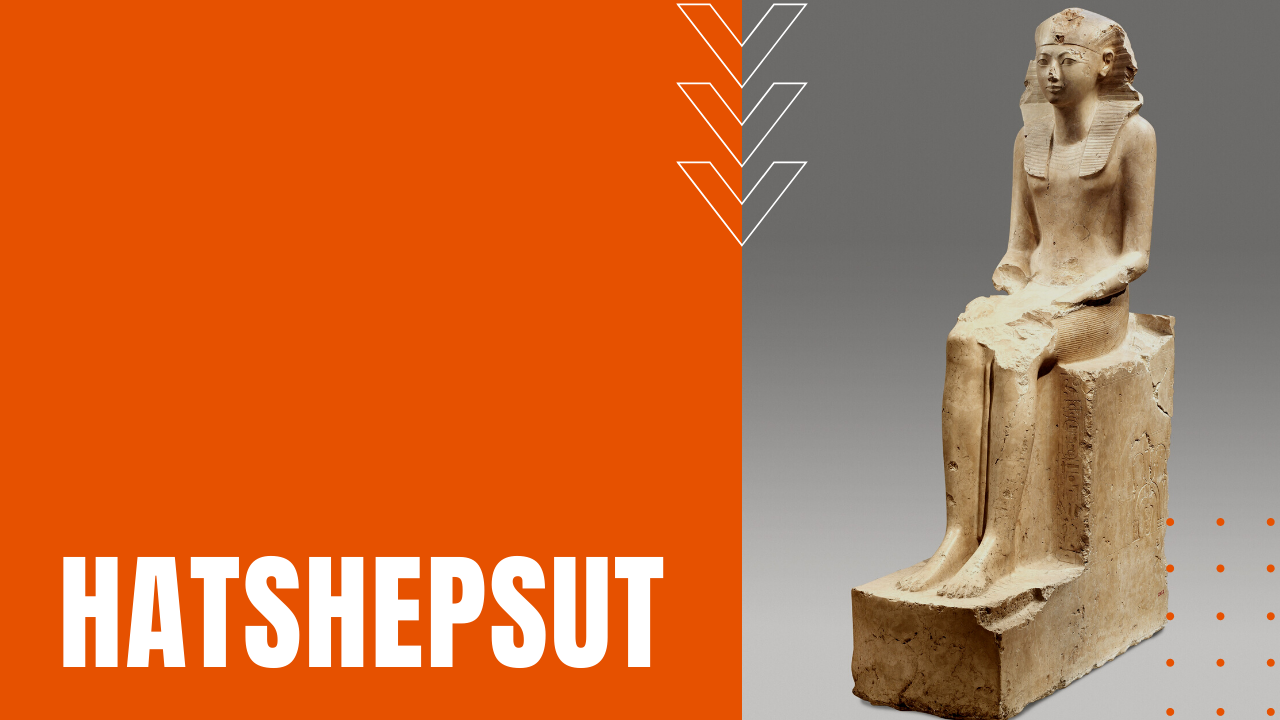Queen Hatshepsut: The Egyptian Queen That Would be King

When Egyptologist Herbert Winlock unearthed a pit in the great temple complex at Deir el-Bahri, across the Nile from the ancient sites of Thebes and Karnak, during his explorations in early 1927, he found smashed statues of the ancient pharaoh Hatshepsut, who was the sixth pharaoh of the 18th dynasty, and perhaps the most successful female queen to ever rule over Egypt.
The Reign of Hatshepsut
Ruling from 1479 to 1458 BCE, her reign was marked by a combination of lust, deceit and revenge, at the same time fostering a period of magnificent art and bold construction projects, including her mortuary temple of Hatshepsut and memorial where Winlock found her smashed statuary likenesses.
After her husband Pharaoh Thutmose the 2nd passed away in 1479 BCE, Hatshepsut was made regent over her young stepson, Thutmose the 3rd, until he became old enough to rule.
Thutmose vs. Hatshepsut
A few years later she usurped power and crowned herself pharaoh, demanding that any artistic renderings of her being be portrayed with bulging male muscles and a traditional pharaonic false beard, leading many historians to point to acts of outlandish deception, aberrant behavior or both.
Many early Egyptologists also surmised that Hatshepsut’s chief minister, a man named Senenmut, was most likely her lover, as well as the evil genius behind Hatshepsut’s many known acts of deviant politics in her quest to stay in power.
Upon Hatshepsut’s death in 1458 BCE, her stepson Thutmose the 3rd at last ascended to the throne while still in his early 20s, and due to his many years of loathing for his corrupt stepmother, he began the systematic destruction of all her monuments and statues, who as Winlock wrote of the matter, Thutmose the 3rd “could scarcely wait to take the vengeance on her in death that he had not dared (take) in life.”
